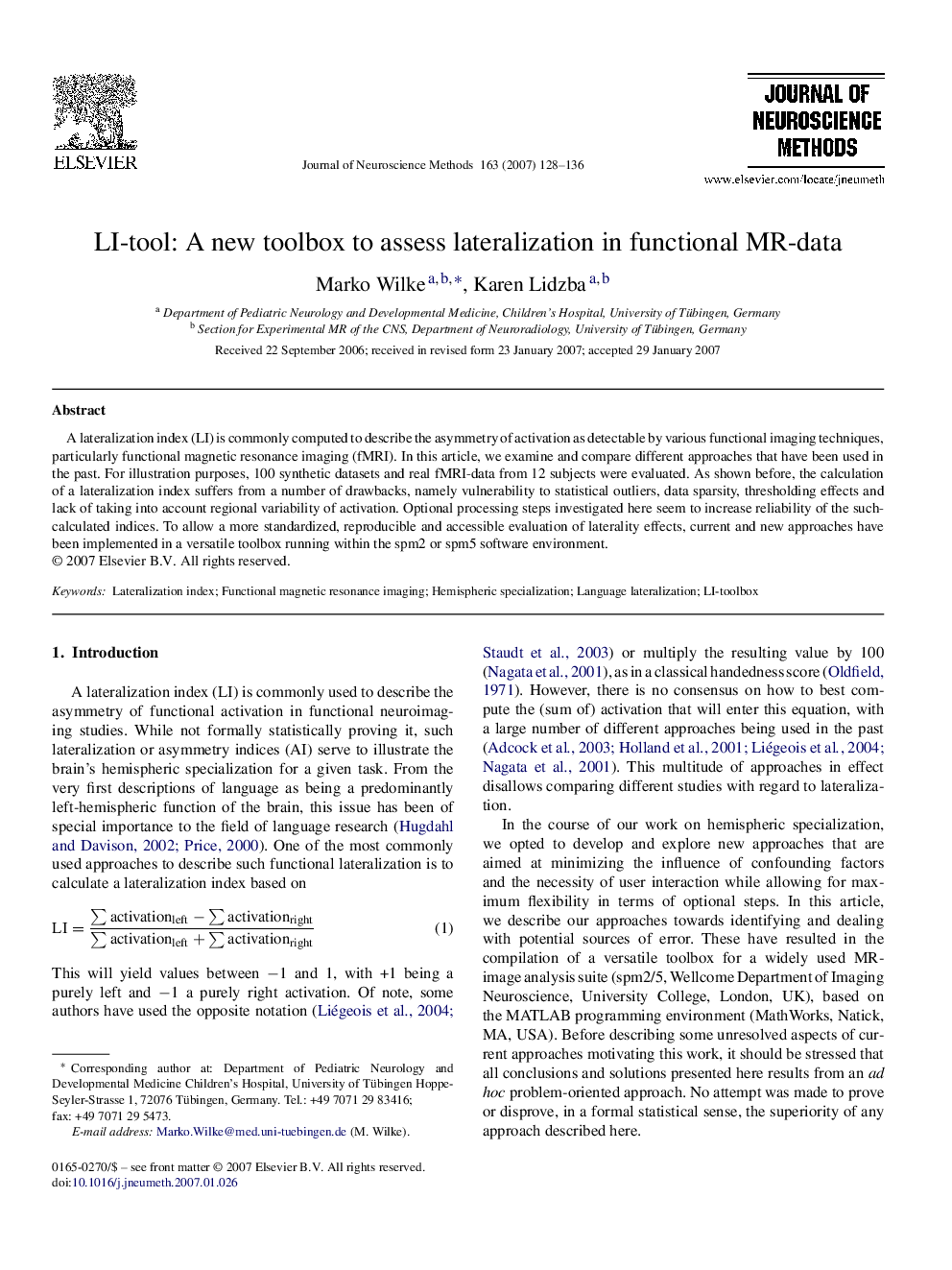| Article ID | Journal | Published Year | Pages | File Type |
|---|---|---|---|---|
| 4336568 | Journal of Neuroscience Methods | 2007 | 9 Pages |
A lateralization index (LI) is commonly computed to describe the asymmetry of activation as detectable by various functional imaging techniques, particularly functional magnetic resonance imaging (fMRI). In this article, we examine and compare different approaches that have been used in the past. For illustration purposes, 100 synthetic datasets and real fMRI-data from 12 subjects were evaluated. As shown before, the calculation of a lateralization index suffers from a number of drawbacks, namely vulnerability to statistical outliers, data sparsity, thresholding effects and lack of taking into account regional variability of activation. Optional processing steps investigated here seem to increase reliability of the such-calculated indices. To allow a more standardized, reproducible and accessible evaluation of laterality effects, current and new approaches have been implemented in a versatile toolbox running within the spm2 or spm5 software environment.
